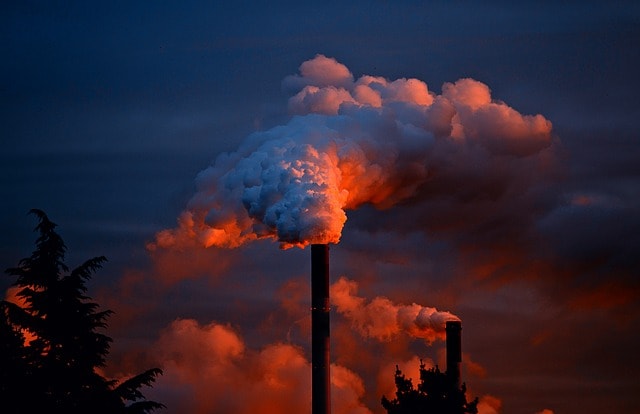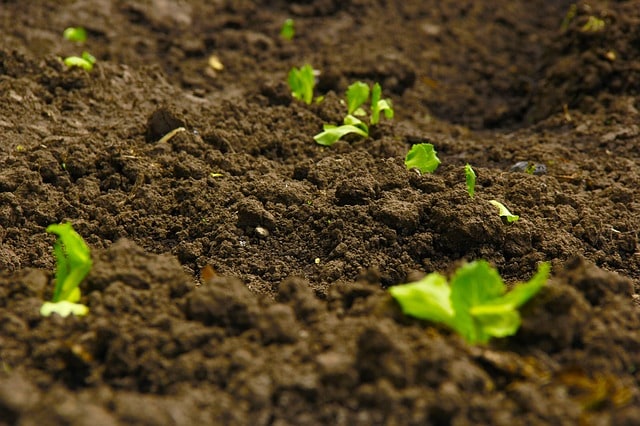10 Striking Reasons of Environmental Degradation

Environmental degradation can be defined as a risk to which the world is exposed. It is termed as pollution. Generally, the term pollution refers to contaminated air, water, soil, besides unclean and unhygienic living areas. Such conditions cause harm to human health and damage to non-human natural world.
According to Wikipedia,
“Environmental degradation is the deterioration of the environment through depletion of resources such as air, water and soil; the destruction of ecosystems; habitat destruction; the extinction of wildlife; and pollution.“
Environmental pollution can be either natural or induced by man.
Bio-genic pollution
Pollution from natural sources are termed bio-genic pollution. One of the most common natural pollutant is dust. Dust is the result of weathering by wind. It blows from areas with very little vegetation, creating haze that reduces visibility. Dust storms cause air and water pollution.
Radon gas emitted from radioactive decay which takes place within the crust of the earth, causes severe air pollution and is a major cause of asthma and asphyxia.
Plants like Parthenium Hysterophorus, are a tremendous threat to the environment, and a major cause of air pollution. The pollen grains of this plant float in the air and cause asthma, dermatitis, besides stunting the growth of plants like tomato, chilli and brinjal.
Human induced pollution
Present day environmental pollution is the result of man’s unusual treatment of nature. With the gradual development of technology, there has been a growing tendency to alter and modify the natural world by man. The use of the natural world from the consumer’s perspective is the chief cause of environmental pollution.
Around 1970 a new discipline called environmental ethics emerged suggesting that the environment in which we live and interact was facing a crucial crisis. Most of these followed the Industrial Revolution and rapid urbanization changing the nature-man relationship.
Top Ten Reasons of Environmental Degradation
1. Exhaust gas from factories and auto-emissions
One of the foremost reason that causes pollution is the exhaust gas emitted from factories. The main air pollutants are sulphur dioxide, carbon monoxide, nitrogen oxide, ozone and lead. The highest concentration of lead in the environment come from a variety of chemicals including gasoline, paints, ceramics, batteries etc.
Prime amongst these are diesel -run vehicles, factory emissions, toxic and acidic wastes. A high concentration of lead from a variety of chemicals increase the risk of pollution and lead to global warming.
2. Deforestation
With the turn of the century there has been a surge to living in urban areas. This has resulted in rapid deforestation all over the world. The demand for more space to provide housing accommodation, to build roads and railways, to harness forest resources, to clear land for pasture and mechanized farming.
The increase demand for wood being used for timber and for various other reasons. Deforestation causes major environmental problems the most important being the carbon -oxygen balance of the atmosphere. The roots of trees hold on to the soil and prevents soil erosion. Deforestation results in loss of top soil.
The rain pattern is affected due to deforestation and it also increases the air pollution. This is the major reason why there are calls for tree plantation; it is to make up for this loss.
3. Technocentrism
Technocentrism is the concentration of all activities on technology including industries. Around 1760 the world entered into a new era of industrialization. Environmentalists are of the opinion that the rapid pollution of air, water and land is the result of this rapid industry oriented lifestyle.
A number of industries like mining, paint and chemical industries are more prone to affect the environment because they release particulate matter, which is known as Respirable Particulate Matter (RPM); these particulate matter not only pollute the air but is inhaled by city dwellers. This air when inhaled affect the lungs and harm the entire respiratory system.
It is the main causative factor of asthma and lung cancer among the urban population. Even new born are vulnerable to this. The electric powerhouses emit fly ash which causes lung congestion and pollutes water bodies. This causes the most direct harm to humans. particulate matter can come from indoor pollution, aerosol and cooking on the roadside in open ‘choolahs’. Cottage industries like making leather bags also cause pollution by releasing chemical waste in the neighborhood.
4. Chemical Effluents
Toxic effluents pose threat to the environment. Petroleum industries and chemical manufacturing industries create major waste products which are released directly into nearby streams without treatment, creating river pollution and causing harm not only to aquatic life but also man and animals who use the water for drinking and bathing.
5. Transport
There has been a tremendous surge in private vehicles in recent times. The more cars the more the rate of pollution causing smog. This is a health hazard effecting the eyes and causing conjunctivitis. Smog is the result of vehicular pollution, and Hydro-Carbons released from engines are the cause of creation of lower level ozone that is harmful to humans.
6. Unplanned Construction
With the influx of population from the rural areas to the urban a new activity called real estate has come up. Their only intention is to convert any available space to high rises. To maximize their profit, they are carrying out unprecedented construction activities that are being carried out right now. Wetlands are being filled up disturbing the ecology of the city and its fringes.
This has created the urban heat island effect, making the urban areas warmer that the outskirts, trapping solar radiation by concrete and cement, and concentrating pollutants. As most of the vegetative cover is removed to make space for construction, exchange of heat is not possible. The constricted circulation of air, traps pollutants increasing the rate of air pollutants.
7. Secondary Pollutants
Pollutants that are not directly emitted into the atmosphere but are the result of interaction of primary pollutants are termed secondary pollutants like the formation of ozone from reaction between non-burnt Hydrocarbons and Nitrous Oxides. This has led to formation of ozone holes.
8. Defective Agricultural Policies
With the rapid growth in population there is a corresponding increase in the demand for food. This has resulted in increase of growth by adding harmful chemicals to the soil. Land is increasingly getting polluted when sprayed by pesticides like DDT. The soil is exposed to overgrazing, to shifting agriculture, leaving it vulnerable to erosion. This leads to silting in major rivers and reservoirs. It ultimately leads to desertification and degradation of land quality and increased pollution.
9. The Population Explosion
The global population has experienced an unprecedented growth from 1 billion in 1800 to 7 billion in 2012. Life expectancy has increased with advanced medical science and so the population is expected to keep growing, and experts have anticipated the total population at 8.4 billion by mid-2030.
This sudden sharp increase in the relative numbers of a population is referred to as population boom. It has created a number of environmental issues including food and lodging, but alarmingly increase in the amount of waste that is generated every day.
10. Arbitrary Land-use policies
Proper use of land resources can mitigate a number of environmental issues, failure to execute land management policies can lead to land pollution and degradation of the worst kind. Extraction from the land as in mining leaves them unusable for habitation and cultivation. Exhausted mines prove that the natural resources are fast dwindling and leaving a piece of land that has been polluted beyond repair.







